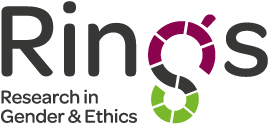Exploring experiences of women with disabilities living in poverty with pro-poor health financing policies in Kenya
Evelyn Kabia is a recipient of a RinG’s small research grant. She works at the KEMRI Wellcome Trust Research Programme (KWTRP), in Nairobi, Kenya and is a member of the RESYST consortium. Evelyn is working on a project which aims to examine the equity and pro-poorness of Universal Health Coverage reforms in Kenya. In this blog, she discusses how she became interested in incorporating a gender lens in her research work.
By Evelyn Kabia
My research work at KWTRP focuses on the perceptions and experiences of the people living in poverty with health financing policies that target them. These include free maternity services, user fee removal in public primary health care facilities, and the Health Insurance Subsidy Program (HISP) for the poor. Preliminary findings showed that one of the factors that limited access to skilled maternity services was perceptions of low quality of care evidenced by reports of health care worker harassment and insensitivity to the needs of pregnant women. It was also evident that people with disabilities living in poverty faced unique challenges due to limited mobility when accessing care compared to people living in poverty who were abled-bodied. These insights prompted me to incorporate an intersectional approach into the study to get an in-depth understanding of how being a woman and living with disability intersects with poverty to influence experiences with pro-poor health financing policies in Kenya.
Most of the women with disabilities living in poverty that we interviewed were single, separated or divorced. This is consistent with evidence that interactions of gender and disability result in women with disabilities having a higher likelihood of not getting married, getting married later and getting divorced earlier compared to men and women without disabilities. Women with disabilities living in poverty were therefore responsible for financially supporting their households and they were also the sole caregivers to their children. The absence of someone to assist them to watch over their children, compounded by the opportunity cost of seeking care which was lost income, that would negatively impact on their households acted as barriers to accessing care for themselves and their dependents. They therefore, forewent care to continue earning a livelihood.
Women with disabilities also face multiple layers of discrimination because of interactions between gender and disability and this leads to poorer access to health care compared to women without disabilities. In our study, this was evidenced by disabled women reporting that felt that healthcare workers had negative attitudes towards them because of their disability and the additional assistance that they required because of their disability. Some healthcare workers also questioned their right to be sexually active and their right to have children. This prejudice against disabled women resulted in a bad patient experience that discouraged them from seeking healthcare services. Women with disabilities also felt disempowered to speak out or raise complaints about the poor quality of care they received because they felt that health workers would not take their complaints seriously.
Interactions between poverty and disability and broader contextual factors also limit opportunities for people with disabilities to participate fully, economically and socially, within society. Our research reveals that negative stereotypes against women with disabilities led to their exclusion from public participation forums. Some women with disabilities were also not informed of such forums because people felt they would need assistance to access the meeting venues. This exclusion limited their awareness about health services and their opportunity to contribute to public participation forums related to health service provision.
Women and people living in poverty are disproportionately affected by disability and when gender (being a woman), disability and poverty interact, they result in multiple layers of discrimination. In Kenya, gender and disability add additional layers of vulnerability that need to be taken into account in designing pro-poor health financing interventions. Our research highlights the importance of a holistic systems approach to improving access to healthcare services.
In an effort to achieve equitable health care for all, health systems need to address the unique barriers that women with disabilities living in poverty face when accessing healthcare. Potential interventions include: expanding social assistance mechanisms to increase the amount of disposable income for the poor; building cultural competence in health service delivery, especially reproductive health services to women with disabilities; ensuring that women with disabilities living in poverty are empowered to engage in public participation; and sensitizing communities on the needs of women with disabilities living in poverty in order to reduce stigma and discrimination and to strengthen family and community support structures.
Incorporating an intersectional and gender lens to our study was instrumental in enhancing our understanding of the varying degrees of vulnerabilities among people living in poverty. Without applying this approach, the unique challenges that women with disabilities living in poverty face while benefiting from pro-poor health financing policies – due to the interaction of their social locations (gender, disability, and poverty) with underlying socio-economic and political structures – would have been overlooked. Our work, therefore, further emphasizes the importance of incorporating intersectionality and gender lens in health systems research in order to develop socially just health policies.
